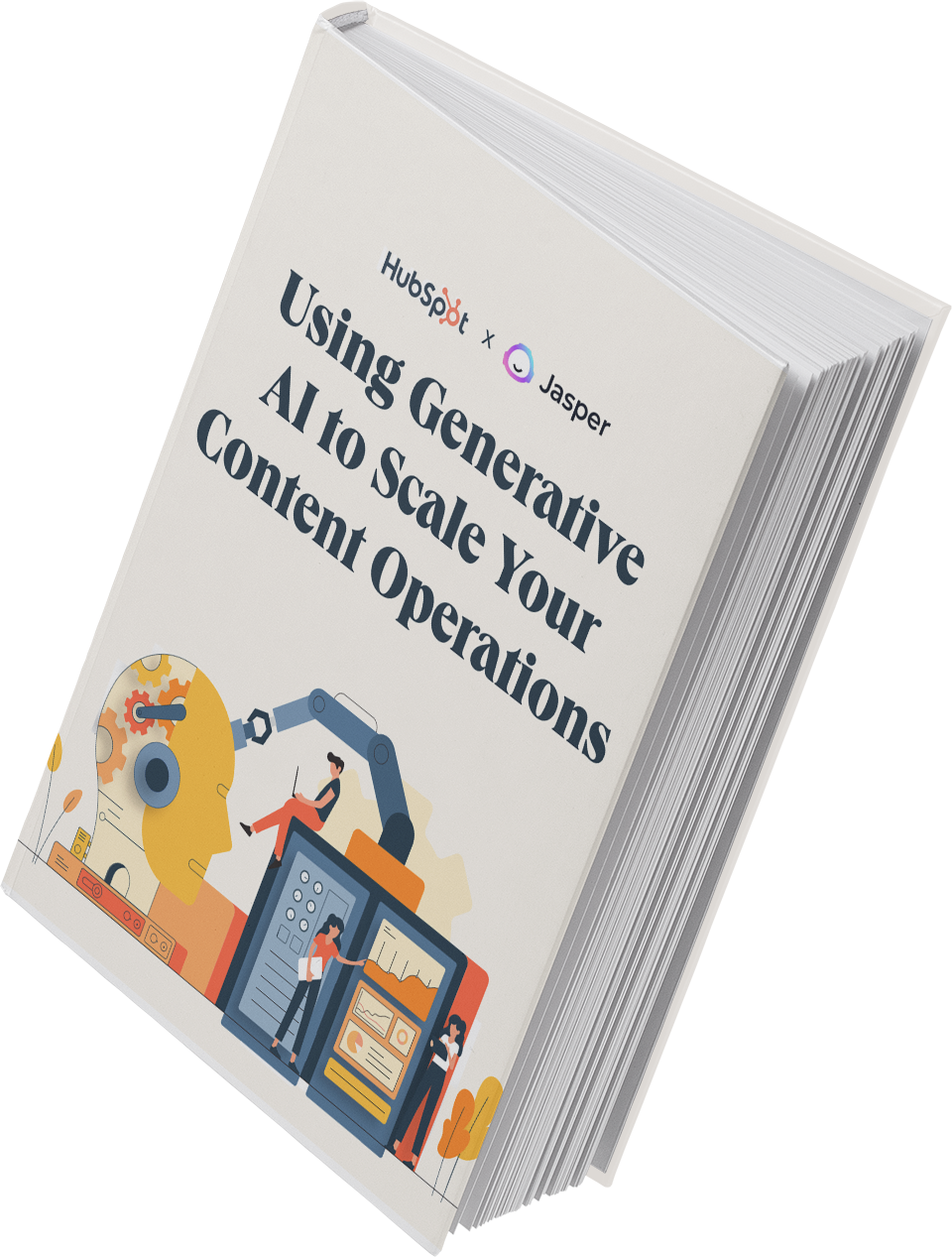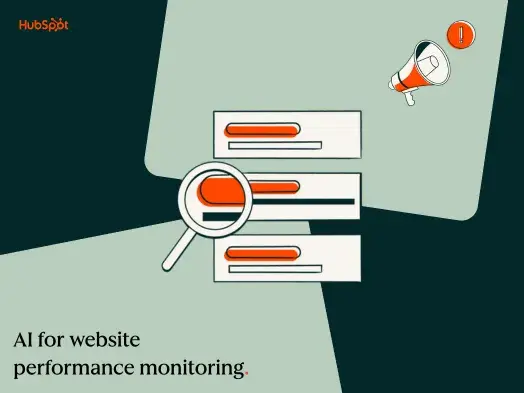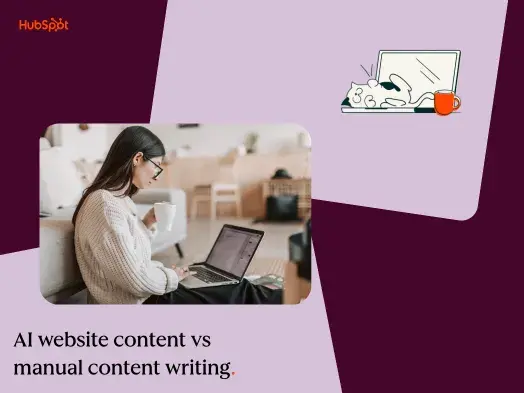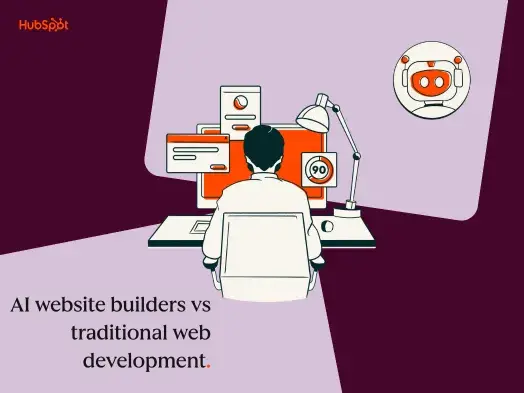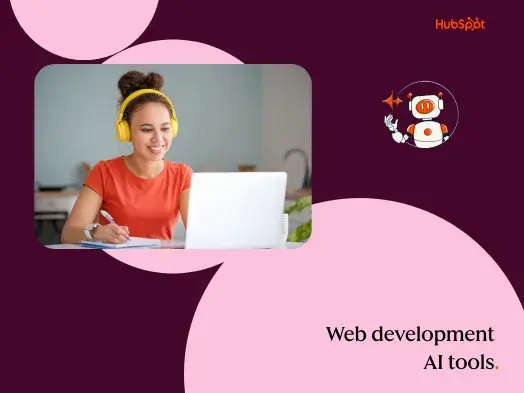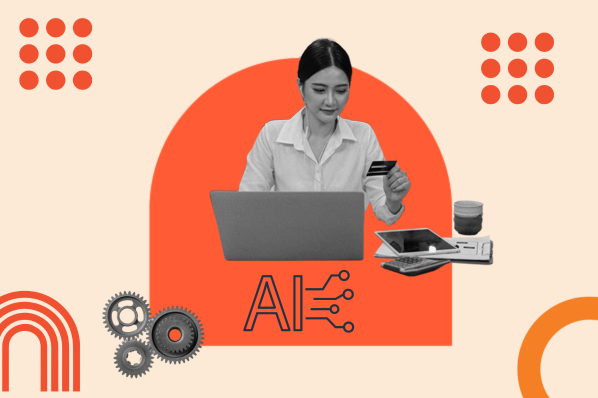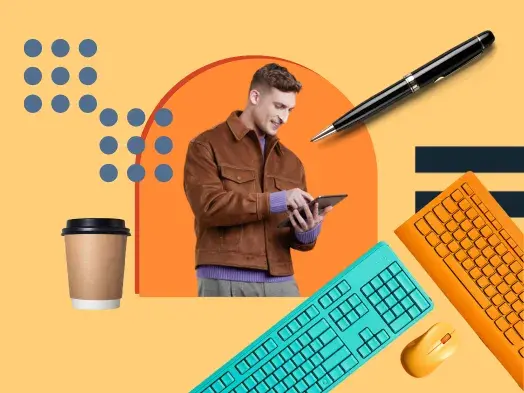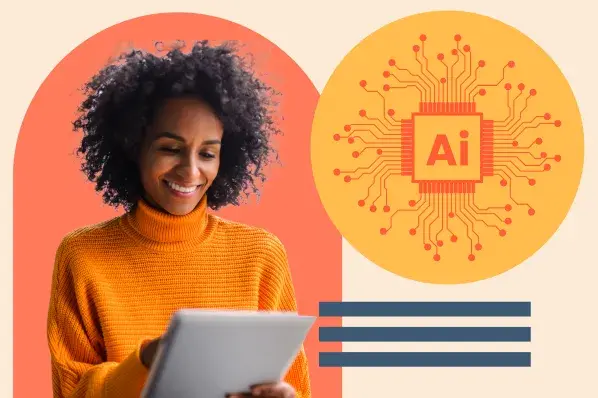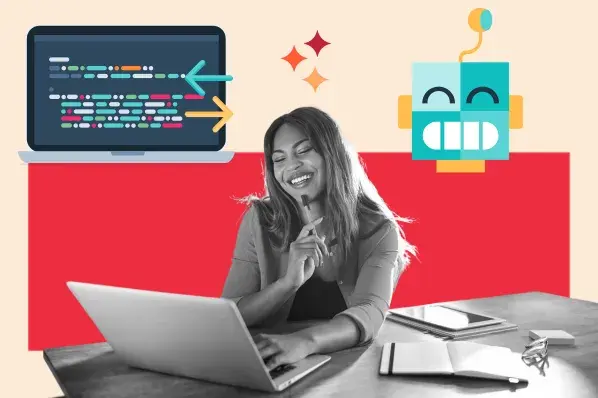If you have questions about AI web design, you’re not alone. We’re here to help walk you through everything you need to know — from what it is to examples of how you can best use it and beyond. Let’s dive in.
What is AI web design?
To quickly recap, when we talk about ‘AI web design,’ we’re discussing the usage of AI tools and technologies to optimize the website design (and development) process. According to a 2021 survey by SnapLogic, 61% of employees report that AI helps improve their productivity at work. (Want more AI stats? Check out our State of Generative AI report.) By implementing AI web design tools, you automate tedious tasks that your design team dislikes and free up their time and energy for creative approaches to more relevant assignments. (And yes, you can quit worrying about if AI will steal your job.)
The best way to look at AI is as a tool that can alleviate the lift associated with the redundant processes occurring in the website design process. Plus, by leveraging the power of AI, you can better allocate your resources — making the entire creation experience more seamless and efficient for designers and developers alike.
How do you best use AI web design tools?
The best way to use AI web design tools is to remember that they’re just that: Tools. Your AI web design tools can automate cumbersome tasks your design team finds tedious, but they can’t substitute the years of experience — and human touch — your teammates bring. By remembering that AI web design tools have limitations and respecting those, you can better determine how to use them helpfully.
Let’s walk through some of the most popular ways to use AI web design techniques on your website.
To create imagery.
One of the most popular ways to use AI web design techniques is to create imagery for your website. Whether you do not have the resources available to work with an in-house graphic designer or they’re swamped with other projects and don’t have the time, you can quickly generate imagery with the help of AI.
To write code.
Next up, you can use AI to write code for your website. Again, this can be helpful if you have limited resources or budget. Alternatively, if you need help getting started, you can use AI to write code to set you on the right path.
To create a better user experience.
Gone are the days when UX designers waste hours looking through data to find one statistic to inform a crucial user experience decision. Instead, with the help of AI, that entire process becomes smoother.
To make your site more accessible.
Did you know you can also use AI web design techniques to make your website more accessible? It’s true! Applying AI to guarantee that your site offers an inclusive digital space for all visitors is an excellent way to use this emerging technology.
To create site copy.
Yes, you can use AI tools to generate website copy. Whether you’re looking for headline suggestions for a website page or need help filling in the gaps on your ‘About’ page, you can use AI to generate copy you can use on your website quickly and efficiently.
However, that doesn’t mean your copywriters are redundant or unnecessary. Instead, your writers can tweak and refine AI-generated content to make it more unique or edit it for clarity.
Remember: AI can help but can’t do it all — at least not yet.
Remember: AI web design techniques evolve daily, but you still need a human touch to refine them. For instance, a human copywriter will add personal anecdotes to enrich your ‘About’ page, or a developer will catch why code isn’t working.
What are examples of AI in web design?
You have a definition of AI web design and a robust understanding of its pros and cons. But what does it look like in practice? If you’re scratching your head wondering, “What are examples of AI in web design?” You’re in the right place.
AI design tools come in all shapes and sizes — so each example of AI in web design looks slightly different. (Psst: In case you were wondering, we’ve rounded up 12 of our favorite AI website design tools.)
Remember how we mentioned the five ways you could best use AI web design above? Let’s walk through examples of AI in web design as it applies to each.
To create imagery.
One of the most popular ways to use AI web design techniques is to create imagery for your website. An example of AI in web design would be using a tool like Fotor to generate pictures to add to your blog posts.
For example, we generated images of a laptop computer in oil painting style with the click of a button. This tool is also helpful because you can toggle between different types of art.
To write code.
For an example of how designers (or developers) can ask AI to write code, we asked ChatGPT: “Can you write code for my website so my text blinks?”
The tool generated code that you could easily copy and paste to begin.
Here's the result.
To create a better user experience.
Next up, let’s walk through an example of how designers can use AI to create a more seamless user experience. You could use a tool such as Research AI to upload data and then use the analysis tool that provides suggestions for insight.
The tool also identifies what your organization is doing right and what could be improved. We like this tool because it has many uses — it’s excellent for AI web design and could be helpful elsewhere in your organization.
Here's an example of how the tool can generate themes from a dataset.
To make your site more accessible.
Accessibility should be a huge priority for all websites — and now, thanks to AI web design tools, your designers can efficiently and quickly ensure yours is up to speed. For instance, UserWay is an AI-powered accessibility tool to ensure your site is up to speed with WCAG and ADA compliance.
To create site copy.
Last, you can use a tool such as ChatGPT to generate website copy. Here’s what happens when we ask ChatGPT what the copy for a contact page for a small business website should include.
Here’s ChatGPT’s response:
This demonstrates that an excellent use for ChatGPT is to help you create an outline for a page you’re writing.
Use AI Web Design to streamline the design process.
By using AI web design techniques to streamline the process, your team could better concentrate on the most vital work they need to automate tedious or redundant tasks.
Artificial Intelligence

.jpg)
